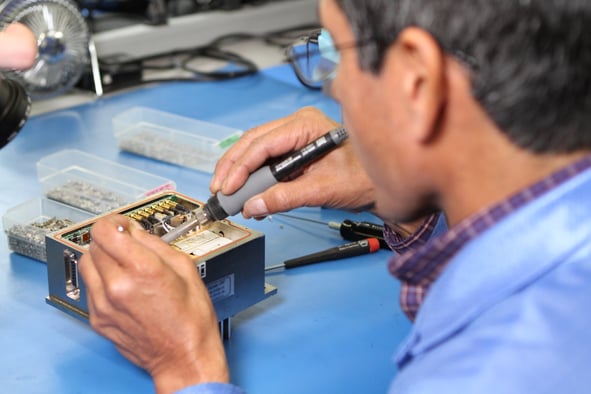 The first wonder of modern semiconductor IC designs is their ability to contain highly complex electronic circuitry in such minimal space. Manufacturers of these technological miracles must ensure that the devices they produce live up to end user's performance expectations and meet anticipated lifetime requirements.
The first wonder of modern semiconductor IC designs is their ability to contain highly complex electronic circuitry in such minimal space. Manufacturers of these technological miracles must ensure that the devices they produce live up to end user's performance expectations and meet anticipated lifetime requirements.
It is a tall order; but, that is not all. Chips must also compete effectively in the marketplace. If the manufacturer expects to make a profit, the design must work reliably and in all types of environments. And, to further complicate matters, the device must also get to the production stage ahead of the competition.
The tension between proven reliability and time-to-market speed creates a problem: How can a device be guaranteed reliable over a typical lifespan measured in years without causing an unacceptable delay in production? To solve this problem, engineers developed the concept of reliability testing.
Reliability testing functionally accelerates the aging process by applying increased stresses to the device under test (DUT) in the form of higher temperature, voltages and other environmental factors. Statistical analysis of the chip's operation at various stages of this "derating" process reveal potential weaknesses in the design.
By conducting various reliability tests before a DUT enters mass production, manufacturers reduce their risks. They decrease the likelihood of releasing flawed products that result in extensive field repairs or even recalls. Ultimately, reliability testing increases companies' chances of making a profit on new designs and helps foster more innovation in the industry.
Types of Reliability Testing
The point of reliability testing is to cause the device to fail through overstressing it. During the process, operational testing shows how well the chip maintains functionality. Whenever the component reaches its breaking point, analysis shows if its design is inherently sound. The method predicts if the device will perform at acceptable levels once mass-produced and deployed in the field.
Test engineers have developed different types of accelerated life tests (ALTs) over the decades since IC chips first debuted. Various factors determine what tests are appropriate for a given device. Libraries of operating specifications and reliability data from previous generations form a statistical baseline from which to conclude new device test results.

Semiconductor standardization organizations such as JEDEC establish appropriate reliability test parameters. Some of the most common tests include:
- High-Temperature Operating Life (HTOL) – This reliability testing method accelerates the lifespan of a DUT through increased temperature and voltage. An accelerated aging factor (AF) multiplier allows calculation of the expected life of the DUT based on the length of testing time. HTOL exercises each substructure of an IC's design, so testing reveals precise information about the device's lifespan and likely failure points due to stress.
- Highly-Accelerated Temperature and Humidity Stress Test (HAST) – evaluates the reliability of device packages in humid environments. By increasing temperature and humidity in a pressurized environment, the test accelerates moisture degradation to the package's seal. Once moisture breaches the seal, failure due to corrosion on the device substrate and connecting leads is likely.
- Temperature Cycle Testing (TCT) – Often used with ruggedized devices, TCT examines a device's ability to withstand extremes of heat and cold. Temperature cycling accelerates fatigue failures in IC device packaging, leads, and seals.
- High-Temperature Storage (HTS) – Simulates long-term storage of devices in high-temperature environments. HTS is considered a passive test since no electrical stresses come into play. HTS helps determine if devices can remain reliable when subjected to high temperature for an extended period.
 Test Validity
Test Validity
Many types of reliability tests exist that simulate specific conditions in which a device might have to operate. Companies task test engineers with determining the best method for evaluating particular ICs.
Test validity assesses whether tests measure the correct parameters to determine if a chip will perform as designed. In order to create reliable products, tests must not only recreate accurate representations of accelerated stress factors but must also select the correct criteria to assess.
Accurate reliability testing that gathers the correct data is crucial to the long-term success of any electronics product sold since it is a verification that the product will function as promised.
If large quantities of the device end up failing when in the field, the company will suffer a loss of both monetary gain and reputation.
Toward Better Reliability
To stay competitive, companies must find cost-effective ways to predict how well newly manufactured devices will perform. One answer is using professionally designed testing platforms flexible enough to execute tests on different products.
Maintaining multifunction testbeds helps production facilities avoid the trap of cobbling together homemade solutions that could prove less than satisfactory. Investing in testing procedures that ensure validity in a wide variety of products can help companies move ahead in the tight race of IC manufacturing.


